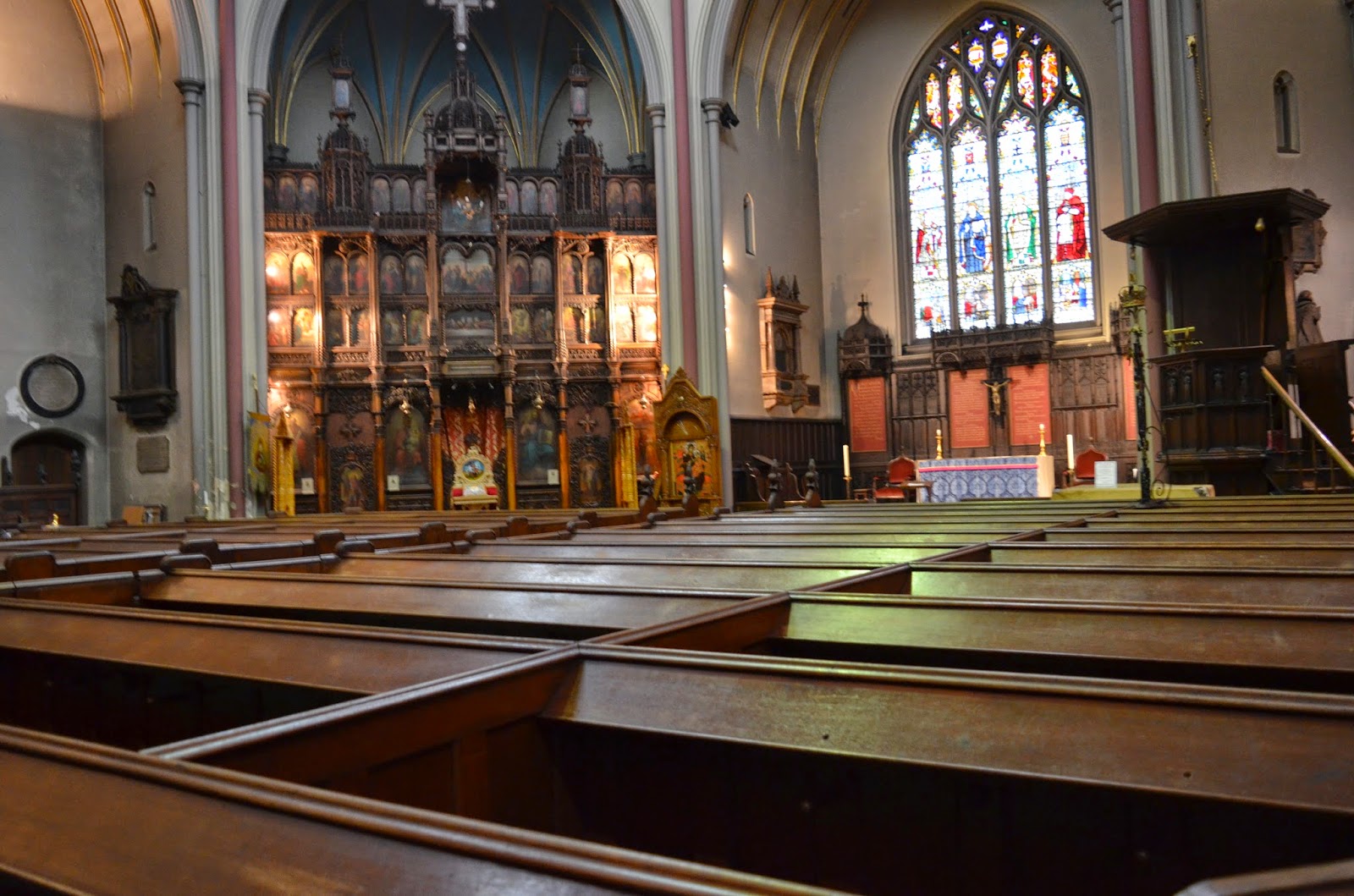Hello Readers!
An exciting new week just started! This week, we will be focusing on exploring different city churches and talking to the church watchers who are own duty to collect their opinions about promoting and curating religious heritage in the city churches. We mapped our journey based on the watchers' schedule, and so far we have visited four of them!
On Monday afternoon, we went to St. Botolph without Aldgate located at the boundary of the city of London and the East End.
On Monday afternoon, we went to St. Botolph without Aldgate located at the boundary of the city of London and the East End.
Churches located at the city gates were often dedicated to Botolph. Travelers could pray there upon arrival and departure. The present church was built by the architect of Mansion House, George Dance, and restored by J.F. Bentley, the architect of Westminster Cathedral. Here are some pictures of the significant historical pieces inside the church:
Decorated ceiling by Bentley, with plaster angels in high relief, holding shields
Reredos, with Corinthian columns and batik hangings by Thetis Blacker, 1982
Organ with pipework attributed to Harris, from an instrument given by Thomas Whiting, 1676 (restored in 1966)
We had a tight schedule on Tuesday because we visited three churches: The Dutch Church, St. Michael Cornhill, and St. Dunstan-in-the-West. We were able to talk to the church watchers on duty and take some nice pictures of some of the highlights of these three churches.
The Dutch Church is a monastic church, originally of the Austin Friars. It was completely destroyed in World War II and rebuilt in 1954.
Commemorative window, a gift from the Protestant churches in the Netherlands, designed by Max Nauta
Large tapestry, the Tree of Life, by Hans van Norden
A bible from the Netherlands, 1618
Tuscan columns and blue-painted ceiling by Sir George Gilbert Scott
Stained glass
Eagle LECTERN, carved by W. Gibbs Rogers
Organ, built from the case of the Renatus Harris organ of 1683-84
Our next stop was St. Dunstan-in-the-West. This church is different from the other Anglican churches because it has a Neo-Gothic exterior, and an octagonal interior. We wandered inside this beautiful church and took a few pictures of the historical art and artefacts.
Interior design
Iconostasis, brought from Antim Monastery, Bucharest, in 1966
Organ, by Joseph Robson, 1834
A statue of Queen Elizabeth
The exterior of St. Brides, five octagonal stages of diminishing size, was used as the model for the traditional wedding cake
In the interior of St. Brides, large, plain glass windows allowed a great amount of light into the church
We were struck by how beautiful and significant these church buildings were! We will be visiting more church buildings in the next few days, and will continue updating with more information!
-AAiC IQP Team

















No comments:
Post a Comment